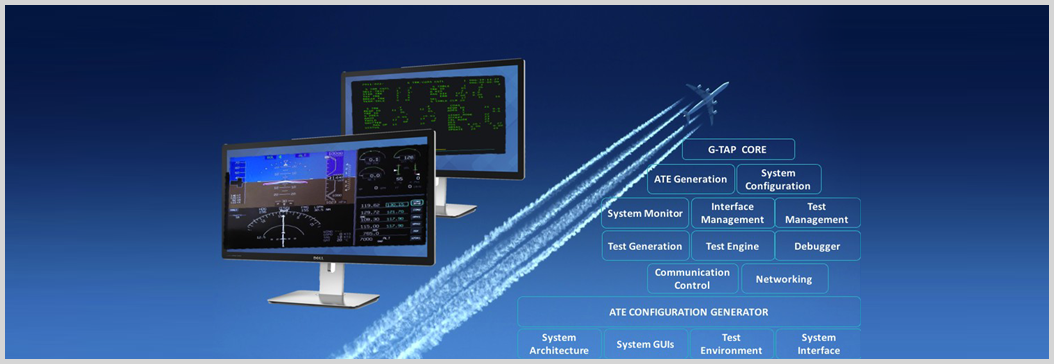Celestain Test Engineering framework and solutions are innovative and efficient. Our solutions minimize the recurring test-automation investments by eliminating the need of a new ATE for each new product and for each new product evolution. Celestain ATE is generated by reconfiguration of its framework. Besides the framework benefits, each ATE is also reconfigurable by the users themselves for a range of products. Genetic Test Automation Platform (G-TAP) is a configurable software system that generates Automatic Test Equipment software for a specified test environment.

G-TAP is architected with (a) G-TAP Core (b) Configuration Generator and (c) Test Generator components. The Core contains the execution engine. Configuration Generator builds the ATE configuration for a desired test environment. Test Generator configures the test scripts generation process for the test environment. Configuration Generator and Test Generator outputs are plugged in to the G-TAP Core to generate the ATE software instance.
●
System Functions : System Configuration function updates the licensed scope of an ATE. System Monitor function performs Power-On and Continuous Built-in Tests.
●
ATE Generator : ATE Generator Integrates the software files of Configuration Generator and Test Generator in to the G-TAP core and builds the ATE software.
●
Interface Manager : Interface Manager function manages the interface configuration of the test environment. This function monitors the interfaces to determine their system status and instrumentation.
●
Test Manager : Test Manager automates, sequences and manages the test execution process. It loads the test cases, procedures and target software from the Test Repository. It stores the test scripts and test reports in the Test Repository.
●
Test Generator : Generates the test scripts for the test cases and procedures in defined template. Test scripts are generated in the defined metalanguage. Test scripts conform to the test environment and external test tools.
●
Test Engine : Test Engine provides the test execution services to the Test Applications. A test application consists of a batch of test cases. Tech Engine invokes the debugger for interactive testing. Test Engine stores the test results in the Test Repository.
●
Debugger : Debugger aids the Test Engine with single-step, watch and modify features for interactive testing.
●
Configuration Controller : Configuration Controller maintains the ATE configuration. It creates and maintains the Connectivity Table. Connectivity Table identifies the data with its interface, system and GUI.
●
Communication Controller : Communication Controller implements the synchronous / asynchronous modes of communication between the ATE and the Test Environment. It implements messages, protocols, flow control and test sessions. It performs encapsulation/de-capsulation of protocol data.
●
Network Manager : Network Manager provides the packet connectivity between the ATE and the Test Environment. The network protocols correspond to the protocol of the system / instrumentation of the Test Environment.
●
Systems Architecture Generator : The systems architecture is created by the interconnection of the SUT and its interfacing systems installed in the Test Environment. The architecture binds the corresponding GUIs, interfaces, data and acquisition & control channels with the respective system.
●
Systems GUI Generator : GUIs simulate the system interfaces in the system’s native format. GUIs are constructed to give the ‘look-and-feel’ of operating the real system. GUIs capture the inputs and display the outputs.
●
Test Environment Generator : Test environment for the ATE is constructed in terms of the SUTs, interfacing systems, instrumentation, control panels, power supplies, external test tools and test repository.
●
Interface Data Generator : Messages and signals flowing through each interface are constructed with their source, destination, protocol. value, limits and frequency parameters.
●
Data Acquisition & Control Generator : Signal and data flowing across the Data Acquisition & Controls are constructed with their mode and bus parameters in their native format.